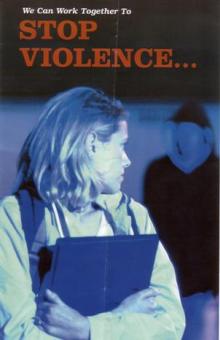 Risk Reducing Factors
Risk Reducing Factors
Think especially hard about having a weapon of any kind in your home. A firearm in the home is more than forty times as likely to kill or injure a family member than it is to prevent a crime from being committed.
There are many ways to protect your home and family without owning harmful weapons. You can invest in an alarm protection system and purchase top quality locks or jamming devices for doors and windows. Initiate a Neighborhood Watch, or get a watch dog for security. You can also check with your local police or the YMCA/YWCA regarding self-defense classes.
If you absolutely believe in owning a firearm of any kind, make sure that they are properly and safely stored away. They should be unloaded, trigger-locked, and put in a protective gun case with the ammunition stored separately. Keep the keys to the stored guns and ammunition out of the reach of children. Always check frequently to see that your firearm and ammunition remain securely stored.
Proper firearm training from a certified instructor is recommended for everyone in the home. Be sure to keep this instruction current.
Inform your children what to do if they should come into contact with a firearm or other dangerous weapon – Stop, Don't Touch, Get Away, and Tell a Trusted Adult.
Did You Know?
Nine out of ten teenagers would be interested in volunteering their time to help in crime and drug prevention programs.
Documentation shows that youth who are involved in a volunteer activity or youth program are far less likely to be involved in drugs and crime and are potentially more successful as adults.
Programs that are designed to prevent crime or help first-time young offenders are considerably cheaper ($1,000 to $4,000 per youth) than a single year's cost for keeping a youth in detention ($20,000 to $30,000).
The major offenders and perpetrators of all violent crimes in this country (murder, robbery, rape, and assault) are committed by people over the age of 18.
Stopping Violence
Problem solving is a skill that needs to be taught to children. Show them constructive ways to settle arguments and resolve conflicts without using harmful actions or language. Learning by example is one of the most effective ways to impress positive attitudes and behavior on children. Common everyday courtesy like "please" and "thank you" go a long way in easing the tensions that could potentially erupt into violence.
Teach children that name-calling and teasing can quickly get out of hand. Words can move swiftly into physical contact and possibly to serious violence. Children must learn to respect one another and realize that a bully is only acting on his own fears and lack of understanding.
What we allow ourselves and our children to watch and listen to for entertainment can have a large impact on our lives. Movies, video games and even the lyrics in music often portray violence as exciting, glamorous or funny. Talk about what the possible real-life consequences or influences of these behaviors might be so that a clearer understanding can be reached.
Avoid people who use drugs and alcohol and encourage your children to do the same. Studies show that drug and alcohol use is closely linked with violence, including the use of guns and other weapons.
Most often a handgun is involved in a robbery. Nine out of ten murders happen with a weapon – eight out of ten involve a firearm.
Nationally, reports state that weapons like bats, clubs, guns and knives have been carried by one in seven teens for protection.
The U.S. homicide rate for persons between the ages of 15-24 is higher than the combined total rate of 11 industrialized nations.
Community Awareness
Take Action!
If you sense a possible violent situation in your neighborhood or are concerned about particular conditions that could lead to violence, inform your local law enforcement agency. They can help you identify when to report something, whom to report and how.
Organize a community weapons exchange or drop off program. Turn in a weapon or other dangerous object that could be used or mistaken for a real weapon and receive a book, coupon or toy in exchange. Anyone can do this and it provides the satisfaction and peace of mind in knowing that you can do something to make your community safer.
Youth organizations and schools need support in keeping guns and other harmful weapons out of the lives of children and teens. Encourage children to take responsibility for reporting any weapons that they may be aware of in or near the school.
The hours after the school day can be a restless time for young people. There are many after-school opportunities available where a teen or preteen can volunteer to work with other children or get involved in sports, music, art and even computers. These programs are referred to as Safe Havens or BeaconSchools and, in many areas, are located right in the schools themselves.
Initiate a community discussion of views on weapons in the home, violence in entertainment, children playing with toy weapons and how to handle arguments. All of these issues and many more can be touched on in PTA meetings, Neighborhood Watches or any informal gathering.
Get a clear understanding of your state and local laws on firearms. Be vigilant in your support of these laws and insist that they are fairly and properly executed. Don't forget to support the people who enforce laws designed to prevent gun violence like your local police, judges, prosecutors and any other local officials.

